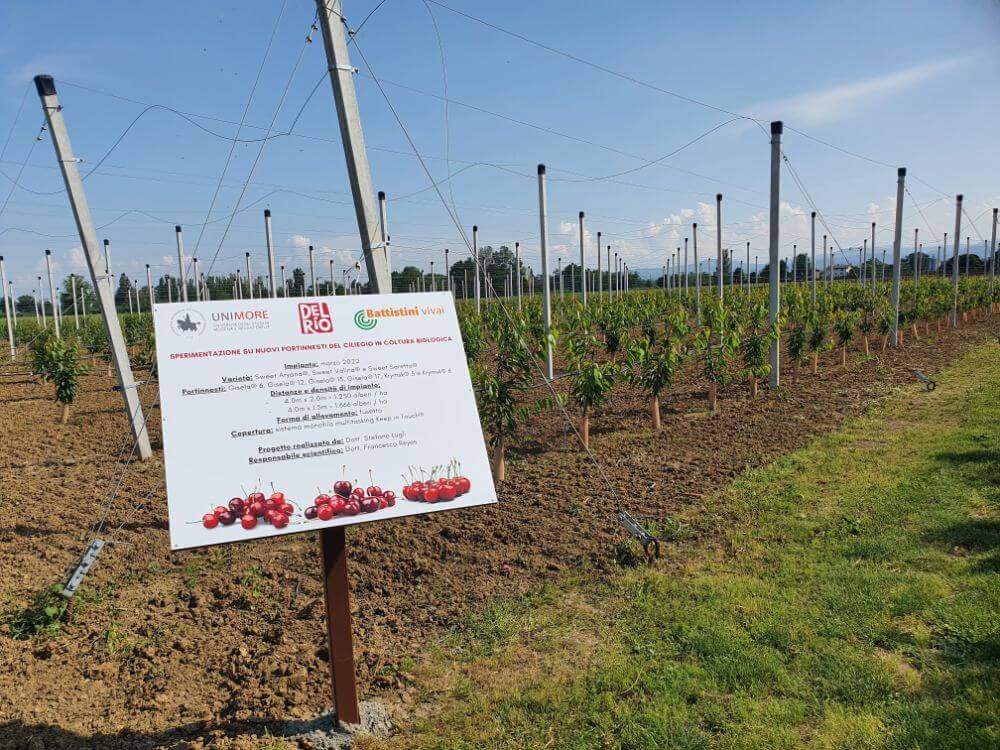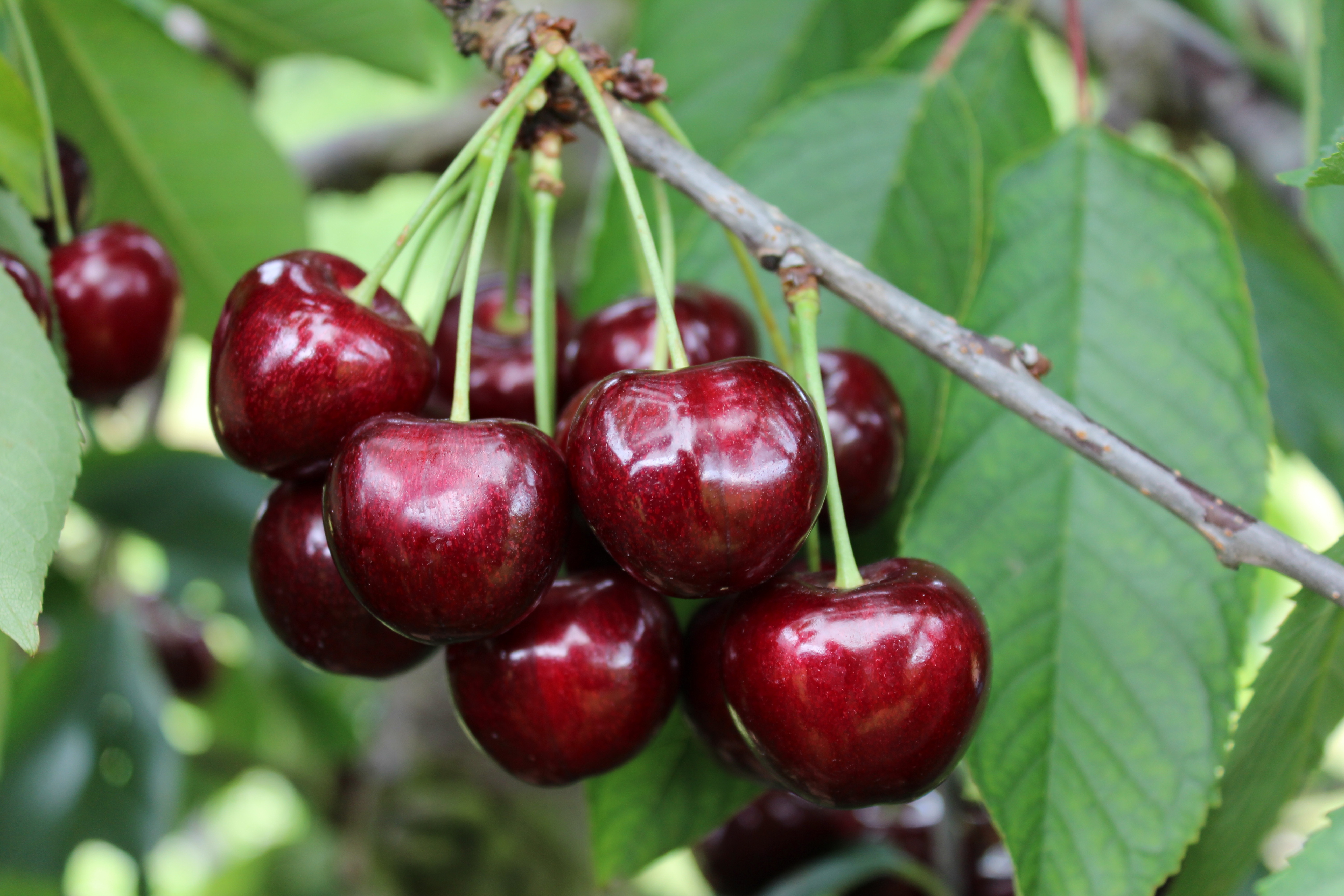 The new experimental plant created in the province of Modena (Italy) for the study of the new KRIMSK® series rootstocks in biological culture. Project coordinator: Stefano Lugli
The new experimental plant created in the province of Modena (Italy) for the study of the new KRIMSK® series rootstocks in biological culture. Project coordinator: Stefano Lugli
The rootstocks used in cherry plantations mostly belong to the class of vigorous or semi-vigorous rootstocks, such as Mazzard (Prunus avium), SL64 (Prunus mahaleb), Colt (Prunus avium x Prunus pseudocerasus), MaxMa (Prunus avium x Prunus mahaleb) and CAB (Prunus cerasus). They are all rather rustic rootstocks that adapt well to different environmental and soil conditions, medium-density planting systems and can guarantee constant and good quality productions thanks to a correct leaf/fruit ratio, which is also easy to maintain.
However, vigorous rootstocks cannot guarantee some of the needs required in modern specialised cherry crops, mainly because of the economic implications related to a quick return on investment (because they are not early in fruiting) and the reduction of production costs (because the trees are difficult to manage in pruning and harvesting).
Fortunately, nowadays, cherry growers have at their disposal dwarfing or semi-dwarfing rootstocks, suitable for high-density planting patterns, which can ensure an early entry into production, excellent production efficiency and good cherry quality. Among the most promising rootstocks, because they combine these advantages with good hardiness, are the rootstocks of the KRIMSK® series.
Below is the report presented by Alice Patella of Vivai Battistini at the WS cherry at Macfrut 2023.
Cherry Times - Tutti i diritti riservati













